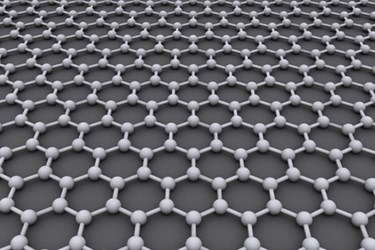New Graphene Microfabrication Enhances Cancer Biomarker Detection
By Chuck Seegert, Ph.D.

A new, ultrasensitive graphene biosensor was recently introduced by researchers from the University of Swansea that shows tremendous promise for the detection of cancer-indicating biomarkers.
The molecule 8-hydroxydeoxyguanosine (8-OHdG) is a biomarker for oxidative stress, and it is particularly useful for detecting the presence of certain cancers. Detecting this molecule using conventional methods, however, can be challenging.
Detecting 8-OHdG using typical clinical assays, like an enzyme-linked immunosorbent assay (ELISA), has been difficult — primarily because 8-OHdG is only present at very low concentrations in urine. According to a recent press release from the Institute of Physics (IOP), the Swansea team may have overcome this challenge, as their newly developed graphene biosensor is up to five times more sensitive than ELISA.
Using traditional methods of manufacturing wouldn’t have worked for this application, so the team developed a new method to grow the graphene layers. With extremely low pressures and extremely high temperatures, thin films of graphene were grown on silicon carbine substrate materials, according to the press release. These layers were then processed using semiconductor microfabrication methods to create 2D patterns of graphene molecules.
Attaching certain biochemical molecules to the graphene functionalized them specifically for binding with 8-OHdG molecules. After the sensor was exposed to low concentrations of 8-OHdG molecules, fluorescent antibodies specific to 8-OHdG were used to confirm its presence on the biosensor apparatus. A directly related increase in the current-voltage relationship of the graphene circuit showed that the binding of the molecule could be reliably tested down to 0.1 nanomolar concentrations. ELISA has only been effective down to the 0.5 nanomolar level, according to a study published recently in the IOP’s journal 2D Materials.
While this application has been shown to be effective, this new type of biosensor isn’t limited to 8-OHdG.
“Now that we’ve created the first proof-of-concept biosensor using epitaxial graphene, we will look to investigate a range of different biomarkers associated with different diseases and conditions, as well as detecting a number of different biomarkers on the same chip,” said co-author of the study Dr. Owen Guy, in the press release.
Graphene biosensing has taken center stage in the search for more sensitive methods that provide increased diagnostic accuracy. Recently, an article was published on Med Device Online that reviewed the use of graphene for field effect transistor (FET) type biosensing for similar applications.
While, graphene has been under intense investigation, it is not the only material in the game. Molybdenum sulfide has been shown to be up to 74 times more sensitive than graphene in the FET space.
Image Credit: Image Credit: “Graphene.” AlexanderAlUS. CC BY-SA 3.0: http://creativecommons.org/licenses/by-sa/3.0/
